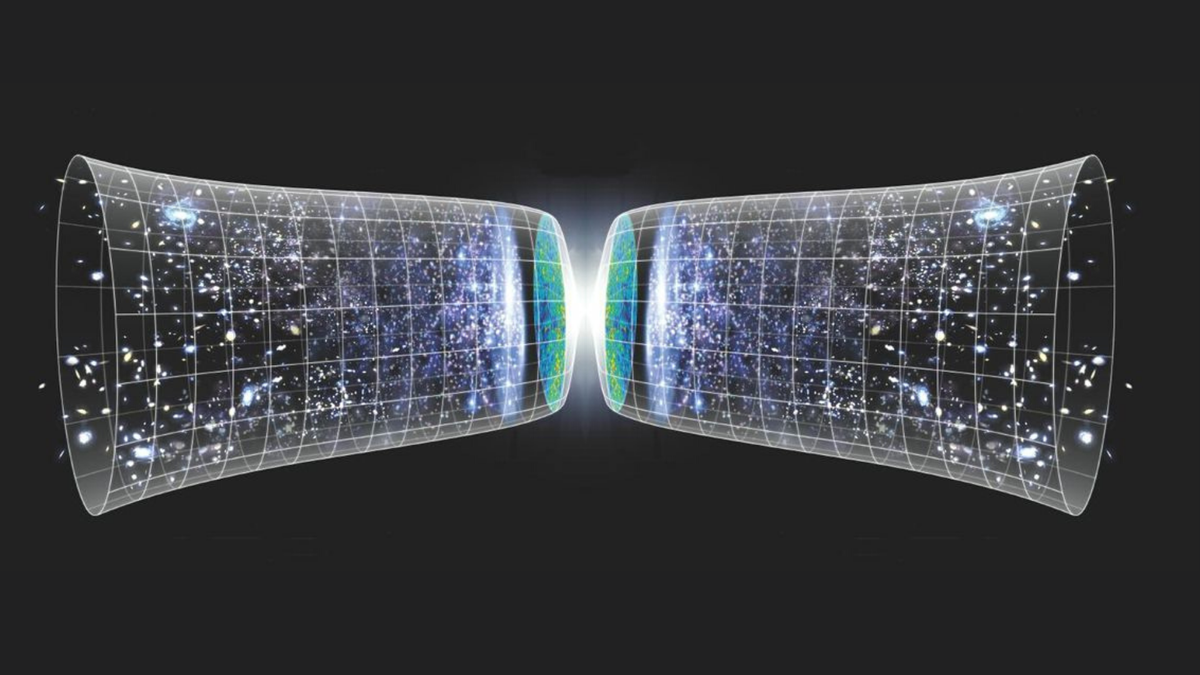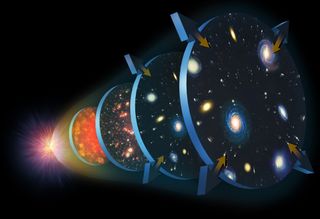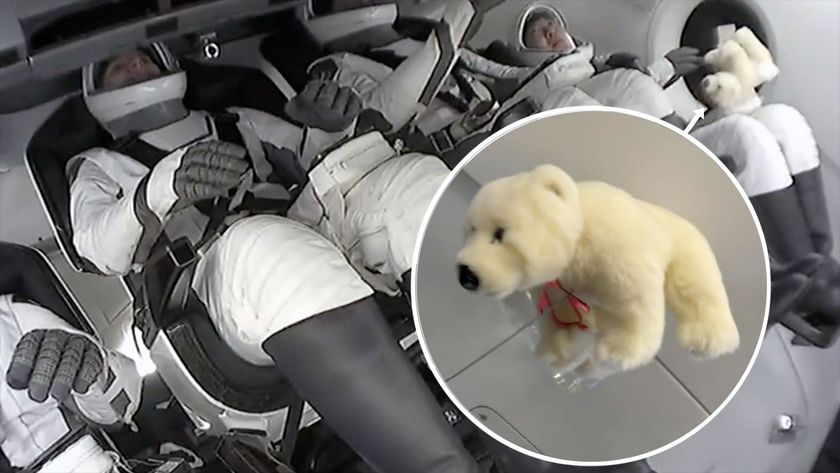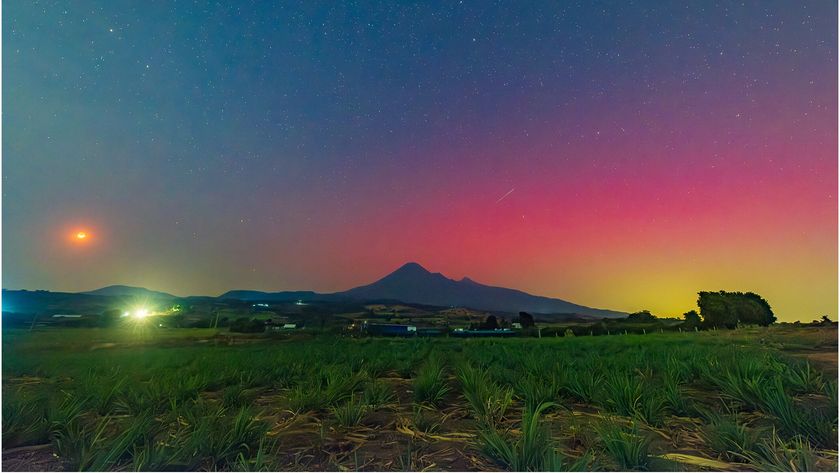'Bouncing' universe theory still can't explain what came first
New research shows that a new model of a universe with endless periods of expansion and collapse still needs a beginning.

New research highlights a troubling problem with concepts of a cyclical universe that experiences infinitely alternating periods of rapid expansion and contraction, known as 'bouncing universe' models.
These bouncing universe models suggest the cosmos has no beginning, eliminating the need for a troubling singularity prior to the initial period of rapid inflation — commonly known as the Big Bang — needed by 'beginning of time' models.
University at Buffalo researchers say a newly suggested bouncing universe recipe that attempts to deal with the problem of entropy — the measure of unusable energy in the universe, which can only increase — suffers from a problem that has plagued previous models of endless inflation and contraction. It still needs a beginning.
Related: The Big Bang: What really happened at our universe's birth?
"People proposed bouncing universes to make the universe infinite into the past, but what we show is that one of the newest types of these models doesn't work," University of Buffalo physicist Will Kinney said in a statement. "In this new type of model, which addresses problems with entropy, even if the universe has cycles, it still has to have a beginning."
This means that proponents of cyclical models of the universe may have to go back to the drawing board.
The leading theory of the universe's origins is so-called 'cosmic inflation.' This suggests that before time began all the energy in the cosmos was contained in a singularity — an infinite dimensionless point not described by the laws of physics.
Get the Space.com Newsletter
Breaking space news, the latest updates on rocket launches, skywatching events and more!
This ended with a period of rapid inflation — the Big Bang — that saw the universe expand and cool, thus allowing the formation of matter — first atoms of hydrogen, then heavier elements, and eventually stars and galaxies.
The problem is, while this theory is very good at describing the universe as it ages from fractions of a second until the cosmic structure we see today, around 13.8 billion years later, it can't describe the conditions of the singularity that existed before this inflation was kick-started. Or even what kick-started it.

This issue is eliminated by a bouncing universe because if periods of inflation and collapse are infinite, then there was no beginning and thus no need to explain what preceded it. This would see the universe undergo similar inflation as suggested by the cosmic inflation model, but then 'springing back' on itself in a 'Big Crunch' of sorts.
Each new inflation period would, therefore, begin from the 'wreckage' of a previous period of expansion rather than a singularity. But, Kinney thinks that bouncing universes come with their own unique problems.
"Unfortunately, it's been known for almost 100 years that these cyclic models don't work because disorder, or entropy, builds up in the universe over time, so each cycle is different from the last one. It's not truly cyclic," the UB researcher said. "A recent cyclic model gets around this entropy build-up problem by proposing that the universe expands a whole bunch with each cycle, diluting the entropy."
Kinney said that this new bouncing universe model tries to stretch everything out to get rid of cosmic structures such as black holes thus returning the universe to its original homogenous state before another bounce begins.
"We showed that in solving the entropy problem, you create a situation where the universe had to have a beginning. Our proof shows in general that any cyclic model which removes entropy by expansion must have a beginning," he said, adding one bouncing universe may survive this assessment. "Our proof does not apply to a cyclic model proposed by Roger Penrose, in which the universe expands infinitely in each cycle. We're working on that one."
Kinney's collaborator is UB physics Ph.D. student, Nina Stein. She highlighted the problem the duo had with a bouncing universe: "The idea that there was a point in time before which there was nothing, no time, bothers us, and we want to know what there was before that — scientists included.
"But as far as we can tell, in models that address entropy, there must have been a 'beginning.' There is a point for which there is no answer to the question, 'What came before that?'"
This means, for now, the mystery of what existed before the universe and time itself remains and will be hotly debated by cosmologists for some time to come.
"There are a lot of reasons to be curious about the early universe, but I think my favorite is the natural human tendency to want to know what came before," Stein said. "Across cultures and histories, humans have told stories about creation, about 'in the beginning.' We always want to know where we came from."
Kinney and Stein's findings are discussed in a paper published in the June edition of the Journal of Cosmology and Astroparticle Physics.
Follow us on Twitter @Spacedotcom or on Facebook.
Join our Space Forums to keep talking space on the latest missions, night sky and more! And if you have a news tip, correction or comment, let us know at: community@space.com.

Robert Lea is a science journalist in the U.K. whose articles have been published in Physics World, New Scientist, Astronomy Magazine, All About Space, Newsweek and ZME Science. He also writes about science communication for Elsevier and the European Journal of Physics. Rob holds a bachelor of science degree in physics and astronomy from the U.K.’s Open University. Follow him on Twitter @sciencef1rst.









